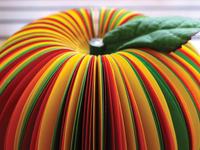Arrangements
Instead of toiling over a graphics layout, you can use Graphviz to concentrate on the essential content and let the software do the design.
|

© jaroas - freeimages.com
Instead of toiling over a graphics layout, you can use Graphviz to concentrate on the essential content and let the software do the design.
The more elements a graph contains, the more complicated the placement of nodes. Instead of working on your project into the night, why not pass the task on to the computer – equipped with Graphviz [1] – to do the perfect job? Graphviz is based on an open format, called DOT, which uses simple text files.
Most distributions already have Graphviz in their repositories. With Ubuntu, you install the software by using the apt-get install graphviz command.
Listing 1 shows the basis for a simple diagram. The first line defines the diagram by name (G ). All components enclosed in curly brackets are related to this diagram – in this case, the connections for a tree diagram. End each line with a semicolon.
[...]
Pages: 5
Network plans, nested dependencies, or binary trees – with Graphviz, you can visualize complex relationships in a simple way.
The plotutils package promises quick help to visualize numerical data in a variety of output formats.
Using LaTeX and the TikZ package, you can create high-quality vector graphics to improve your documents by making them more visually appealing.
© 2025 Linux New Media USA, LLC – Legal Notice